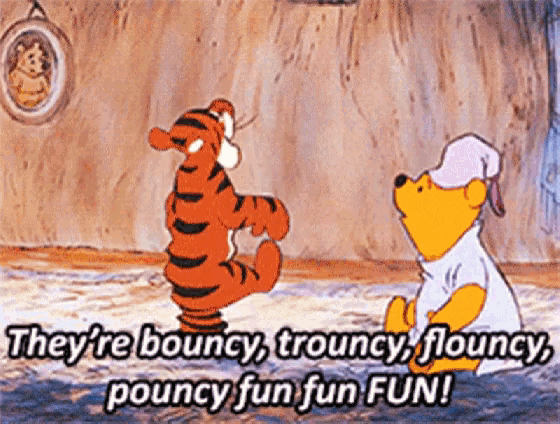The Rhythm of Spring: What to do with a classroom of "springy" Tiggers!

Spring is here! The days are warmer, the sun is sticking around longer, and your students are likely feeling a little extra springy (Anyone have a class full of Tiggers this spring?) With all that energy bouncing around, it may take some creativity to help your students stay focused.

What if you could channel all that enthusiasm into something productive? Music is a fun and effective way to engage your students, calm their minds, and make learning feel fresh and exciting. Let’s dive into some musical ideas that will turn your classroom into a springtime symphony!
Sounding the Zero Noise Signal
We all know the classic “Hand in the Air - Zero Noise Signal,” but why not mix it up this spring? Instead of the usual silent signal, try using an instrument or sound effect to grab attention. One year, I used a train whistle during a unit on trains. The students loved it! In April, I switched things up with a rainstick. It was perfect for the spring season and provided an opportunity to honor the native traditions surrounding that instrument. For spring, consider using bird whistles, ocean drums, or a springtime sound that ties into your content.
You might even introduce a new instrument every week or month as your Zero Noise Signal. This would integrate music standards and make the learning process fun for all students. Even if you don’t feel “musically inclined,” anyone can shake a maraca, ding a triangle, or blow on a quena!

A Spring Dance
Ah, the excess energy in spring. The best thing to do – is lean into it!
When I learned to drive, my dad took me to an empty parking lot covered with snow and ice. As I’d accelerate through the lot, he’d say, “slam on the brakes!” Off we’d skid - again and again - until I learned how to turn into the skid and use that momentum to get us back on track.
You get where I’m going with this. Spring energy needs an outlet. Rather than fighting it, lean into it with music and movement. Perhaps this means getting wiggles out before coming to the carpet. For younger students, this could be marching to the carpet while practicing a chant written to the tune of The Ants Go Marching.
Spring is the perfect time to target your dance standards. (Yes, we have National Art Standards, including music and dance.) Studying folktales around the world? Celebrate different traditions and celebrations as you go. Learn the Waka Waka dance, the Cha-cha-cha, the Schuhplattler, etc. Studying the life cycle of the butterfly, the water cycle, seasons...? Have teams create their own dances, illustrating the process and selecting the music that helps express their message.
Soothing Spring Sounds
Let’s face it: there are moments when the springtime buzz can feel overwhelming, and your students (or you!) might just need a moment of calm. That’s where soothing music comes in. Slow, peaceful melodies—like instrumental music or classical tunes—can help students relax, breathe deeply, and regain their focus.
Lean into the spring season with nature-inspired sounds like bird songs, gentle rain, or the soft sound of a bubbling brook. These calming sounds can be played in the background during independent work time or transitions between activities. It’s especially helpful as students are coming in after lunch or recess. It’s amazing how quiet and soothing music in the background can create a peaceful, focused atmosphere that helps students ease back into learning.

Musical Transitions
Have you ever tried using a song to signal transitions in the classroom? When it’s time to clean and line up, start playing your “transition” song. Students will soon internalize the song's duration and automatically know how much time they have to finish up and get it line, or meet you at the carpet. And they’ll be singing as they do it! (“Hi ho, hi ho, it’s off to line up we go…”)
Of course, chants work well for this too! What about writing, or adapting a chant about the Three Personal Standards? Make it short, upbeat, contagious, and fun. When students begin to hear the chant, they know to join in, push in their chairs, and find their spot on the carpet.
The World of Music
Spring isn’t just celebrated in your classroom—it’s a season enjoyed all over the world. And what better way to explore the season than by using music from different cultures? Playing songs in different languages or from different countries can introduce your students to the diverse sounds and rhythms of spring around the globe.
For example, if you’re teaching about the rainforest, you might explore tropical music from South America. Or if you’re diving into international traditions, try a French folk song or an African drum beat. This is a perfect opportunity to teach cultural awareness, and it might even inspire some translanguaging opportunities where students explore language and music together.

A "Spring Soundtrack"
Here’s a fun idea: let your students create their own spring playlist. Students can listen to their playlists during independent work time to help them focus. This allows students to express themselves and personalize their learning environment.
If you use a T-Graph for Social Skills and Team Points, consider how this might add a little spring pizazz to your Team Points. Yes, by spring, you may need a little extra something to boost the value of those team points.

The sounds of spring are all around us. By harnessing the power of music, you can channel all that spring energy into something positive and productive! Music is a great tool for building focus, retaining learning, enhancing creativity, and bringing sunshine and joy into the learning process.
Let’s make the most of this vibrant season and keep our students engaged, energized, and in tune with the rhythm of spring!


